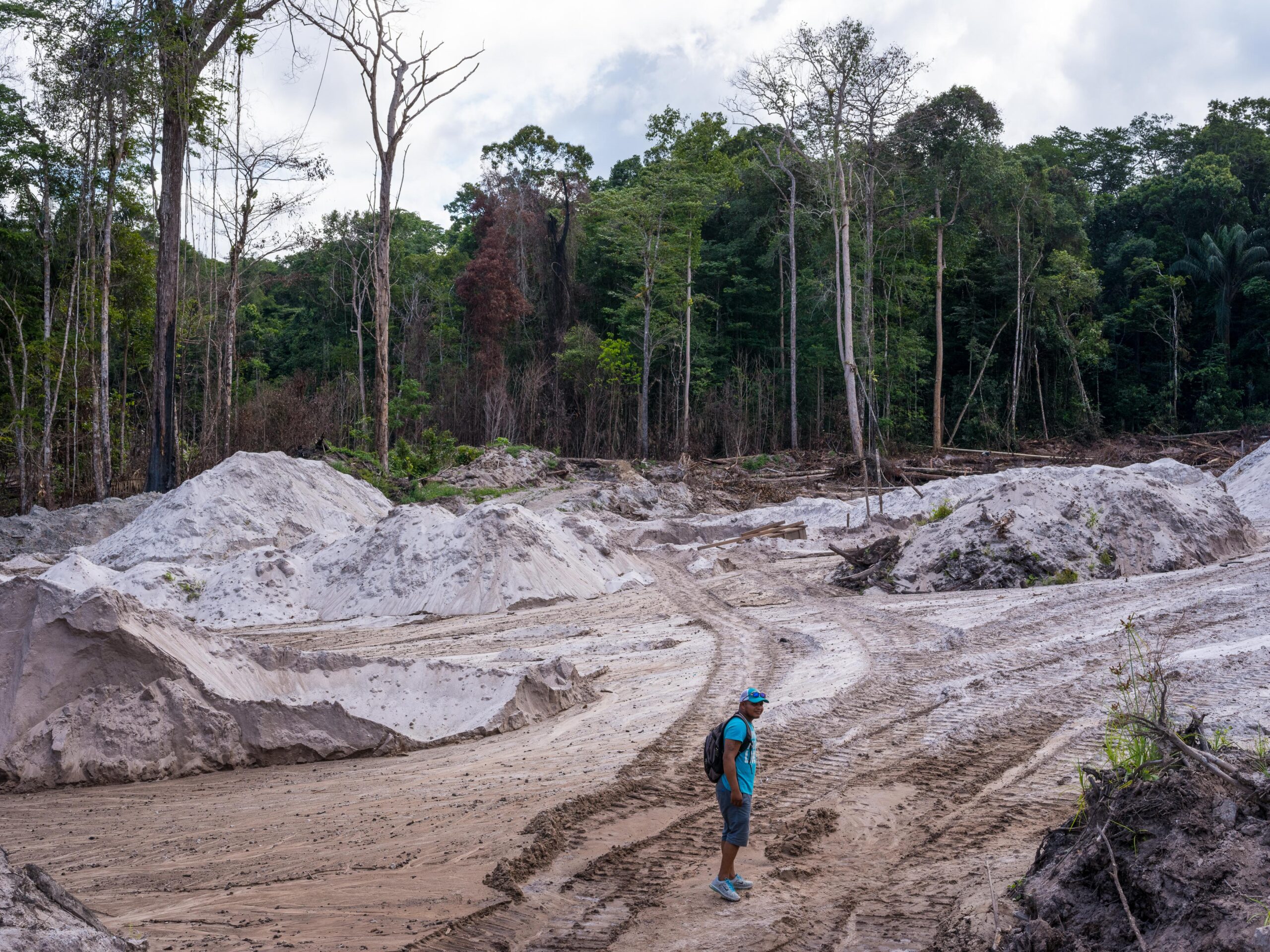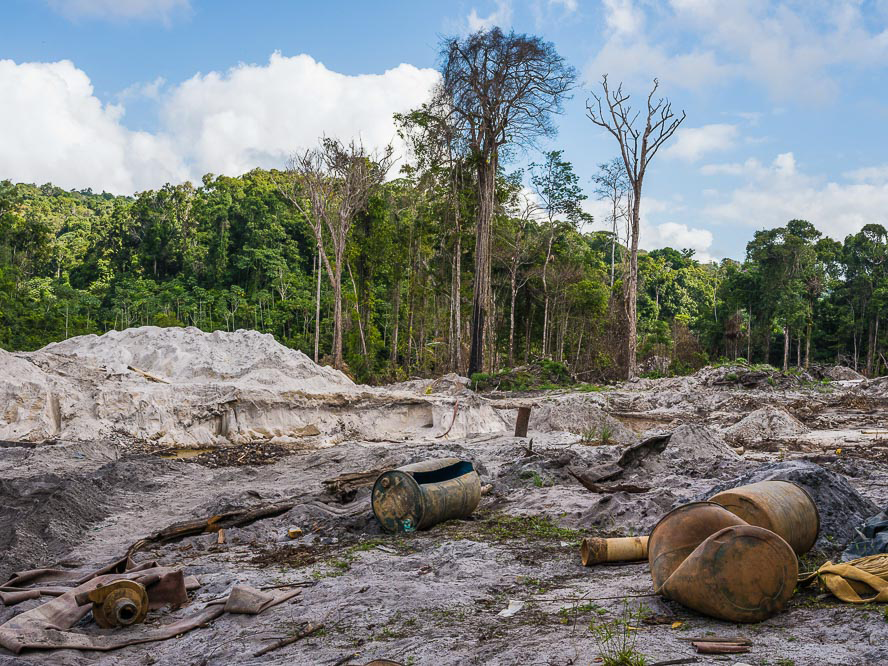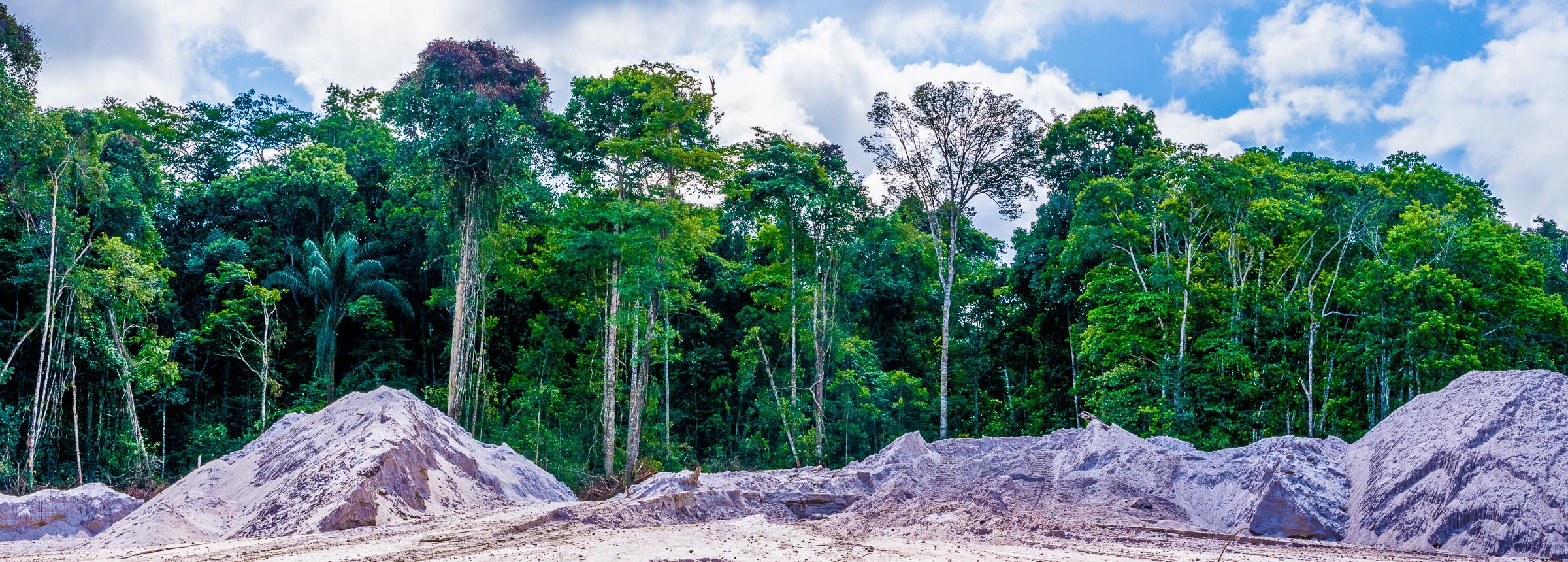
A Gold Miner in the Forest
What’s the main threat to Guyana’s forest? People trying to make a living.
By Chris Warren

Among the last things you can expect to see along the road headed south from the Guyanese city of Linden is a living, breathing human being. In large part, that is because the deeply rutted dirt road to Brazil cuts through thick forest where human settlements of any sort are exceedingly rare.
So spotting a young man in a teal t-shirt emblazoned with the question “what’s not to like?” wearing headphones and standing by the side of the road is reason enough to stop. After removing his ear buds, the man, whose name is Nick Thomas, makes the startling comment that he had just been talking on the phone with his wife — in New York City, where she is a manager at the Starbucks in JFK Airport.
Besides serving as a human reminder of how technology has made the world small, Thomas provides a real-life lesson about one of the main threats to Guyana’s remarkable tropical forest. Thomas is a gold miner who hiked out from the forest to the road to catch a ride into the capital city of Georgetown. There, he planned to pick up food and fuel for the small crew of prospectors he was working with and return within a day. But the unexpected arrival of visitors changes his plans, and he eagerly offers to show off the mining operation he oversees as foreman.

Empty barrels of gas used to power an excavator are piled near the entrance of the mining camp, and the roar of the nearby machine as it moves dirt seems especially loud compared to the usual daytime quiet of the forest. It doesn’t take more than a second to see what the quest for gold does to the forest: A swath of land about half a mile in length and a quarter mile in width has been completely stripped of trees, replaced by large piles of soil, pools of water and the machinery and pipes needed to search for gold. This is what deforestation looks like.
There’s nothing illegal about what Thomas and his crew are doing; they obtained the required permits from the government and the presence of unknown strangers obviously doesn’t spook them. At the moment the global price of gold is low enough that this sort of mining operation is not widespread. But a few years ago, when gold prices spiked after the global economic downturn, legal and illegal mining were far more common in Guyana, making efforts to limit deforestation more challenging.

In a poor country like Guyana, the economic incentive to look for gold is strong and understandable. Thomas left architecture school to become a miner because the money was just too good to pass up. He lured his cousin to leave school and get into the business too. “Today, he owns two of that,” he says, pointing at the excavator. “He say, I should have been here a long time ago, the money you make here.”
One of the ongoing challenges for Guyana is balancing conservation efforts with the economic benefits its people can gain from mining and logging. Reducing Emissions from Deforestation and Forest Degradation (REDD+) agreements that economically reward developing countries for protecting their forests can make striking that balance a little easier, especially when the impact of mining, logging and forest conservation on greenhouse gas emissions is estimated. According to research done by the Ecosystem Services Unit of Winrock International and the Guyana Forestry Commission, mining’s impact on greenhouse gas emissions is about three times that of logging. Nevertheless, the emissions from these activities make up a tiny fraction (less than one tenth of one percent) of the total carbon still stored in Guyana’s forests.
For his part, Thomas is convinced that his native land is doing a good job. “I travel Guyana 10 years, traveling from one mining area to the next,” he says. “All them places I travel, and most of the forest intact.”

Related Projects

